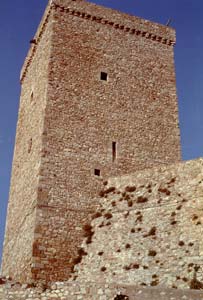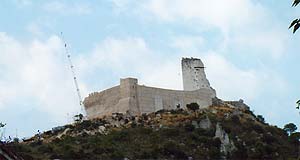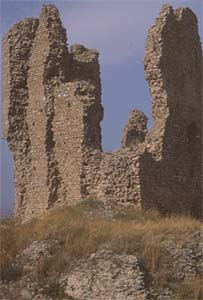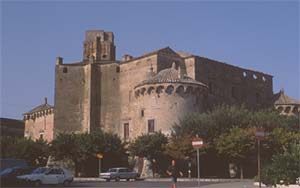![]() Neighbouring
regions
Neighbouring
regions
Molisian
architecture, although it occasionally displays autonomous features as a
result of the peculiar morphological characteristics of the territory,
depended more or less directly upon external historical events and building
traditions. The relations of interdependence affected the military, but most
especially the religious, architecture. As regards the latter, these
influences are more apparent because religious buildings have suffered minimal
transformations, whereas military architecture, subject to cyclical
adaptations to changing requirements and periodic reconstruction, is less
easily recognisable. The most immediate associations were with areas that had
direct historical relations with Molise : Daunia (a section of Lower Molise
belonged to Capitanata until 1811), Abruzzo and Campania. The castles of
Apulia include, in particular, Mount S. Angelo (the pentagonal tower of the
Giants was erected by Robert Guiscard), Castelpagano (already flourishing
under the Norman lordship of Count Henry) and the castles located south of the
river Fortore, which were already important nerve centres of the Byzantine
defence system, Dragonara and Fiorentino (built by the catepano Bojannes),
Deliceto (built by the Norman Tristainus in 1073), Bovino (built by the Norman
Drogone or by the Counts of Loritello on the ruins of a Roman fortification)
and Serracapriola (the most ancient section dates back to the 9th
century). The fortified convents of St. Mark la Catola, St. Mark in Lamis,
Ripalta and Calena should also be mentioned.
The elements that associate Molise with Abruzzo are numerous: the Vasto and
Ortona fortifications (cities with ancient ports) represent Aragonese
transformations of older systems. The Romanesque churches on the coast of
Apulia and the church of St. John in Venere at Fossacesia in Abruzzo are
examples of sacred architecture.
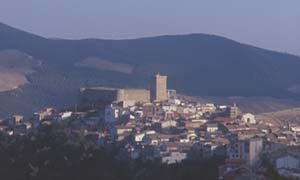 |
Deliceto |
|
|
Deliceto |
|
|
Rocca Ianula |
|
|
Tertiveri |
|
|
Serracapriola |
